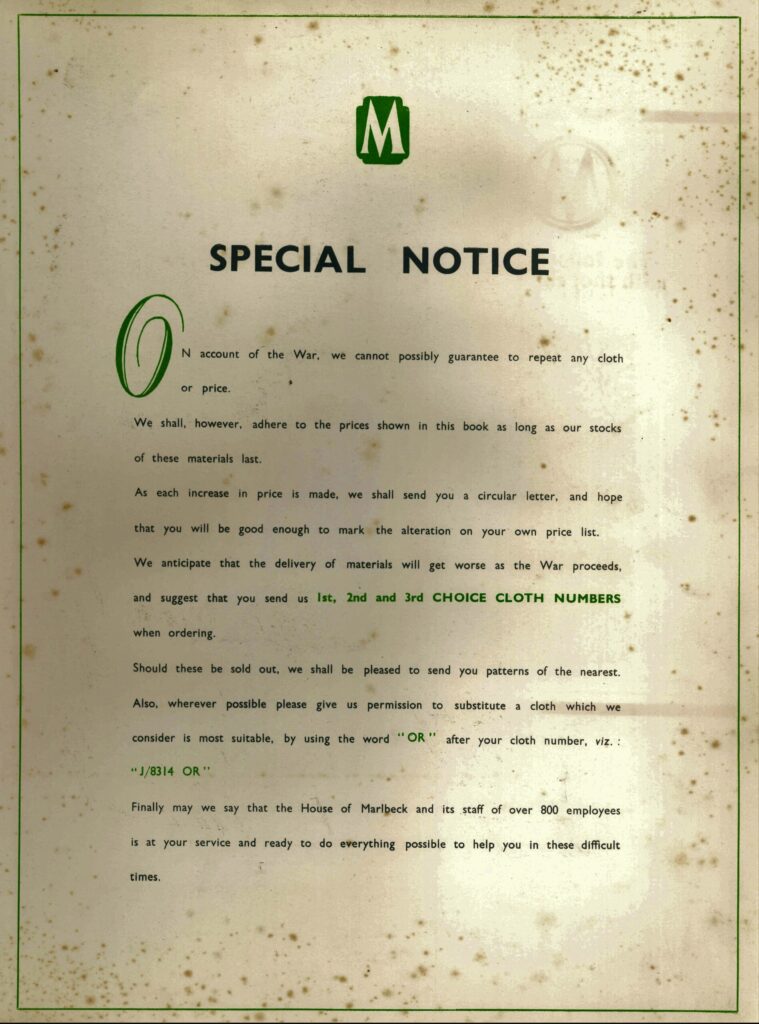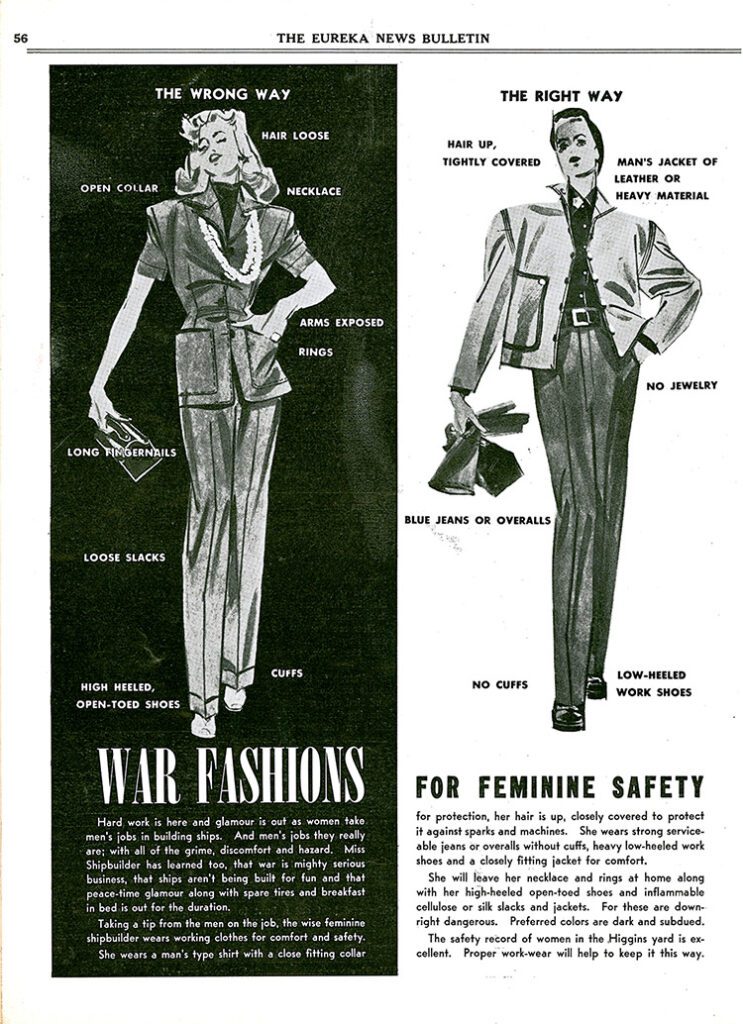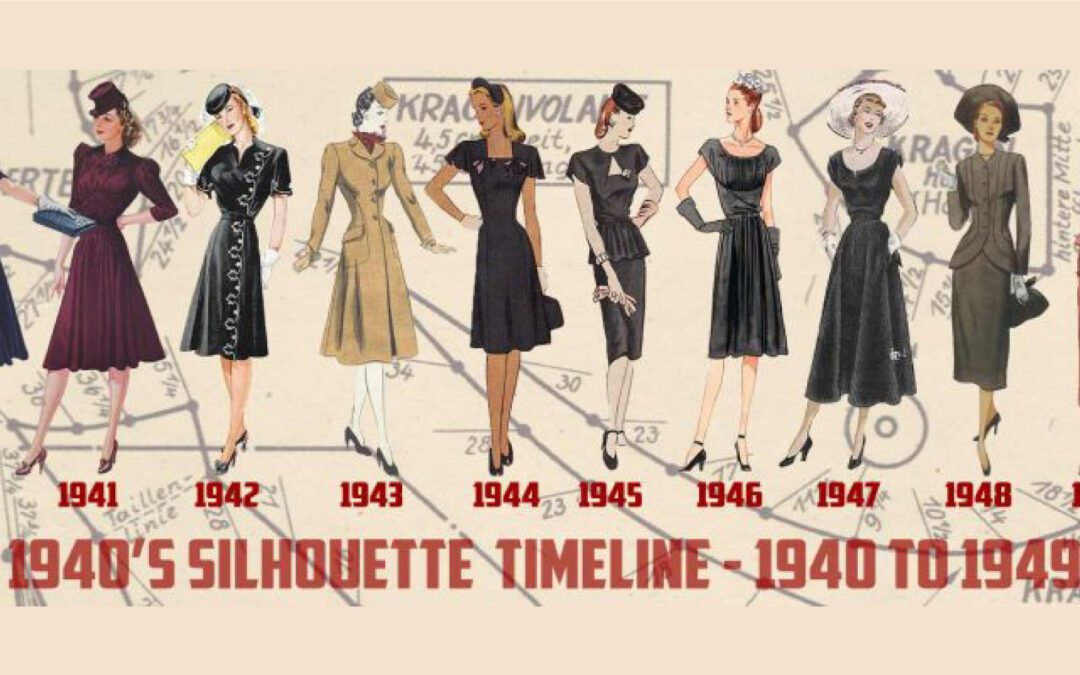Fashion has always been an important part of social history even until today!
We are always trying to keep up with the latest fashion trend, however, during the Second World War, it was very different! Today we are focusing on ‘Fashion on the Ration’, an important part of the 1940s.

With the first half of the 1940s dominated by the Second World War, fashion stalled. Both men and women were often seen in their uniforms during their service in the war. If they happened to get to wear their own clothing styles, they were dictated by rationing and CC41 Utility Clothing. The 1940s were defined by a clean and slim silhouette with a military feel. Jackets, Blouses, Sweaters and Skirts were short and close fitting with a range of different looks – even using shoulder pads! Shoe Fashion on the other hand, was to wear sensible flat heeled shoes. These were the basic features of the wartime ‘Utility’ fashions.

In 1940, British silk stockings were in short supply. To take their place, various brands of leg make-up appeared on the market and women resorted to drawing seams with eyebrow pencil down the back of each leg to give the appearance of wearing stockings. Check out our podcast episode Gravy Legs to learn more!
In March 1941 Ernest Bevin, Minister for Labour, called on the women of Britain to help the war effort. Many women of all ages found themselves not only in the munitions factories, but as more women were conscripted, they were found in the more male dominated jobs such as tank and aircraft factories. The introduction of women into these areas released men for the services – Army, Air force and Navy. Women could choose to join one of the auxiliary services – The Women’s Royal Naval Service (WRNS), Women’s Auxiliary Air Force (WAAF), Auxiliary Territorial Service (ATS) or on the land feeding the population – the Women’s Land Army (WLA). For the first time women were to be found in the male dominated areas, manning anti-aircraft batteries, driving trains & tractors, operating cranes and much more.

Fancy clothing was out – trousers or dungarees were worn instead of skirts and a scarf was tied around the head to protect against the risk of hair getting caught in the machines.
The government encouraged the slogan ‘Make Do and Mend’. Older clothes were transformed into modern styles and women’s magazines carried tips on how to spend clothes coupons and how to revamp old suits and dresses. Women even converted their husbands’ suits into ladies’ suits to wear themselves as the majority of men were away in the forces.

Heavy blankets were converted into fashionable overcoats and knitting was encouraged if you were able to get the wool or unpick an old jumper.
Knitting patterns included those for slippers, socks, & jumpers for all age groups as well as patterns for the various services, so a wife could knit a jumper for a loved one far from home.
The sewing patterns of the time all had to conform to the same stringent guidelines as the shop purchased clothes. There were limits on hems, pleats and turn-ups.
One important part of Fashion on the Ration was Shops and department stores. Many shops had various catalogues what you could purchase an item in. At Eden Camp, we have the Marbeck Tailormade Spring/Summer Catalogue for 1940. Although this was prior to rationing, many civilians used this as a great way to purchase items for their wardrobe.
This artefact will be placed on display in Hut 7, but which shop window will you see this catalogue in?


